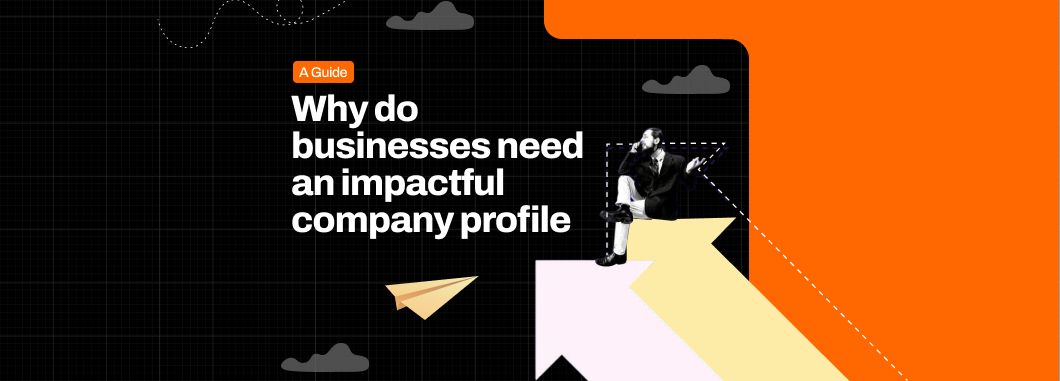Prresentations are one of the most powerful tools in business communication tools but just like any tool, their impact depends on how well you use them. From investor pitch decks and sales decks to training sessions and TEDx talks, not every presentation works the same way.
Each type has its own objective, structure, and delivery style. Understanding these differences is key to creating content that actually aligns with your purpose, whether you’re educating, persuading, pitching, or inspiring. Before creating any presentation, starting with clarity on your audience, intent, and environment becomes a foundational insight can transform a generic presentation into a high-impact one.
In this guide, we’re breaking down the 10 most essential types of presentations with examples, practical use cases, and expert-backed presentation tips.
Understanding 10 Types of Presentations
1. Informative Presentations
.avif)
What Is an Informative Presentation?
An informative presentation is designed to educate an audience by providing clear, factual, and well-structured information. It’s about delivering knowledge in an engaging way. Think of this as the "just the facts, please" type of presentation.
Common Use Cases: Market trend reports, Medical research summaries, CEO annual updates, Educational lectures, Policy briefings
Tips for Creating an Effective Informative Presentation
- Break it into digestible sections
- Use visuals to simplify complex data
- Make it interactive with Polls, Q&A, and examples throughout the presentation
If you’re working on a data-heavy report, balancing detail with clarity is crucial. You can explore best practices in our guide to Cognitive Load in Presentations.
2. Persuasive Presentations

What Is a Persuasive Presentation?
A persuasive presentation aims to convince your audience to take action, believe in an idea, or make a decision. Whether it’s an investor pitch or a debate speech, persuasion is key.
Common Use Cases: Sales Pitch Decks, Marketing Campaign Pitches, Investor Pitch Deck, Political Speeches, Product Presentations.
Tips for Creating an Effective Persuasive Presentation
- Use storytelling in presentations
- Use data and social proof
- End with a strong call to action
Related reads: How to end a presentation, the art of mastering persuasive presentations
3. Demonstrative Presentations

What Is a Demonstrative Presentation?
A demonstrative presentation teaches the audience how something works through a step-by-step approach. As the name suggests, it’s all about demonstrating or showing.
Common Use Cases: Product Demonstrations, Software Tutorials, Cooking Shows, Medical Procedures, DIY Workshops
Tips for Creating an Effective Demonstrative Presentation
- Use live demos whenever possible
- Break down steps clearly
- Encourage audience interaction
4. Inspirational Presentations

What Is an Inspirational Presentation?
An inspirational presentation aims to uplift, motivate, or empower the audience by using personal stories and emotional appeal.
Common Use Cases: TED Talks, Graduation Presentations, Leadership Conferences, Motivational keynotes, Self-Improvement Seminars
Tips for Making Effective Inspirational Presentations
- Be as authentic as possible
- Use powerful storytelling
- Leave a strong takeaway
5. Business Presentations

What Is a Business Presentation?
A business presentation is used in corporate settings to communicate plans, strategies, and performance updates.
Common Use Cases: Quarterly Business Review, Board Meeting Presentations, Project Proposals, Partnership Decks, Company Profile
Tips for Making Effective Business Presentations
- Keep it short yet crisp
- Use a professional design
- End with a clear takeaway
High-stake presentations like business presentations require more extensive expertise, so you can consider pairing up with a presentations agency offering professional presentation design services.
6. Event Presentations

What Is an Event Presentation?
An event presentation is tailored for large gatherings like conferences, expos, and award ceremonies. The goal is to captivate a diverse audience, set the tone for the event, and deliver a message that a live crowd can relate to.
Common Use Cases: Conference Presentations, Product Launches, Institutional Ceremonies, Trade Show Presentations, Panel Discussions
Tips for Making Effective Event Presentations
- Add more visual impact
- Keep your audience entertained
- Rehearse well before delivering your presentation
Related read: How to deliver a presentation
7. Education and Training Presentations

What Is an Education and Training Presentation?
An Education and training presentation is designed to educate employees, students, or customers on a specific topic. It’s the backbone of effective concept classes, onboarding sessions, workshops, and skill development seminars.
Common Use Cases: Employee Onboarding, Software Training, Safety Protocols, Customer Education, Skill Workshops
Tips for Making Effective Education and Training Presentations
- Try to add interactive elements
- Use more real-life examples
- Give out supplementary materials like handouts, etc. in sessions
8. Technical Presentations
.avif)
What Is a Technical Presentation?
A technical presentation focuses on delivering specialised information, where the nature of information is highly technical. It’s meant to explain complex technical concepts, systems, or processes in a way that is accessible to both experts and, at times, non-specialists.
Common Use Cases: Scientific Conferences, IT System Overviews, Medical Case Studies, Technical Workshops, Engineering Seminars
Tips for Making Effective Technical Presentations
- Keep it well-structured
- Use visuals wisely
- Simplify without dumbing down on the content
9. Interactive Presentations

What Is an Interactive Presentation?
An interactive presentation actively involves the audience in the learning process. Instead of a one-way lecture, it encourages participation through activities, Q&A sessions, or real-time feedback.
Common Use Cases: Workshops, Chat Sessions, Training Seminars, Community Events, Quiz Presentations,
Tips For Making Effective Interactive Presentations
- Use templates from interactive tools (Mentimeter, Slido, or Kahoot)
- Encourage participation from the audience
- Mix up the format with group activities or breakout sessions.
Related read: how to create interactive presentations
10. Project Status Update Presentations

What Is a Project Status Update Presentation?
A project status update presentation is designed to provide regular progress reports on projects, campaigns, or company initiatives. It keeps stakeholders informed about milestones, challenges, and next steps.
Common Use Cases: Project Reviews, Campaign Reporting, Progress Meeting Presentations, Construction Site Updates, Research Progress
Tips for Making Effective Project Status Update Presentations
- Keep it brief yet informative Concise
- Use dashboards to present updates
- Highlight challenges and solutions
Bonus Tips That Work For All Types of Presentations
Regardless of what type of presentation you’re building, some universal best practices apply across the board. These small details often go unnoticed, but they play a huge role in your deck’s clarity, engagement, and memorability.
Here’s how to sharpen your presentation toolkit:
1. Use a Strong Title Slide
Your title slide is your first impression, and in presentations, you don’t get a second one. A great title slide builds curiosity and sets the tone for what’s to come. To get more insights on how to make your title slides more effective, give our blog a read- how to write catchy title slides.
2. Choose the Right Font and Stick to It
Typography makes or breaks design as fonts affect readability, tone, and even perceived professionalism. Check out our list of 15 best fonts for presentations, it will help you find the right font for your presentations.
3. Script Smartly
Your delivery is only as strong as your preparation. Whether you’re presenting live or over Zoom, having a solid script, or at least a structured outline, can make your delivery feel confident and cohesive. Get started with these guides: writing a presentation script and creating a presentation outline.
4. Know When to Hire a Pro
Sometimes, no matter how well you write or design, your deck still doesn’t feel right. That’s when it makes sense to bring in a specialist. Professional presentation designers and presentation design agencies can really transform your presentations in terms of strategy, narrative and design. Give this a read to get a better idea of how a presentation design agency works- How a presentation design agenvy can upgrade your presentations.
Related read: how to choose the right presentation design agency
Final thoughts
Circling back to the main point- choose the right presentation for the right moment. Every presentation type has its unique purpose, and by understanding when and how to use each style, you get one step closer to keeping your audience aligned with you.
Our team at Crappy Presentations is well versed with creating different types of presentations, so if you’re looking to partner with someone to make your presentations for you, we might just be your perfect match. Contact us and we’ll make sure your next presentation turns out exactly as you need it, or maybe even better than what you’ll expect!
Don’t believe us? Take a look at our work!
For more insights, tips and tricks about ‘all things presentations’, check out the Crappy Presentations Blog!








